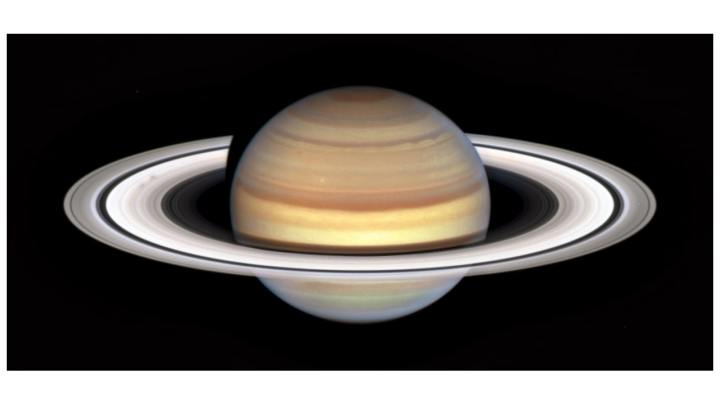Saturn is famous for its beautiful rings, but these rings have a strange feature: “spokes” which appear intermittently. These spots in the rings can be light or dark and can look like blobs or like lines stretching radially outward from the planet, and they appear in a regular cycle related to the planet’s equinox. Now, the Hubble Space Telescope has the opportunity to study these oddities of the rings in more detail and researchers hope they can learn more about what causes these features.

The spokes were first noticed by the Voyager mission which passed in the 1980s, and since then they have been seen just before and after the equinox: the time at which day and night are of equal length across the planet because the sun is directly over the equator. On Earth, we experience two equinoxes each year, and the same is true for Saturn — but because Saturn is further out in its orbit and its year is much longer, its equinoxes occur just once every 15 Earth years.
Saturn’s next autumnal equinox is coming up on May 2025, so researchers are using Hubble to observe the planet and its rings at this key time. “Thanks to Hubble’s OPAL program, which is building an archive of data on the outer solar system planets, we will have longer dedicated time to study Saturn’s spokes this season than ever before,” said Amy Simon, head of the Hubble Outer Planet Atmospheres Legacy (OPAL) program, in a statement.
That’s good news because although the researchers know they’ll see spokes around this time, they don’t know exactly when they will start appearing.
“Despite years of excellent observations by the Cassini mission, the precise beginning and duration of the spoke season is still unpredictable, rather like predicting the first storm during hurricane season,” Simon explained.
The spokes are currently visible as two grey smudges within the rings to the left of the planet in the image above, and though these may fade the researchers expect to see more in the coming months.
The current theory of the spokes’ origin is that they are related to Saturn’s magnetic field, as charged particles from the sun interact with it in a way that could charge particles within the rings, shifting these particles out of place with the rest of the ring structure. But astronomers need to do more research to be sure of this theory — and to find out whether similar spokes could occur on other planets with rings, such as Neptune or Jupiter.
“It’s a fascinating magic trick of nature we only see on Saturn —for now at least,” Simon said.
Editors' Recommendations
- Celebrate Hubble’s 34th birthday with this gorgeous nebula image
- NASA gives green light to mission to send car-sized drone to Saturn moon
- This beautiful nebula holds a starry mystery at its heart
- Hubble images the spooky Spider Galaxy
- The expansion rate of the universe still has scientists baffled



